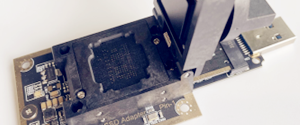Vocabulary R-Z
R
RAM
Random Access Memory (see also DRAM, SDRAM). A data storage device for which the order of access to different locations does not affect the speed of access. This is in contrast to magnetic disk or magnetic tape where it is much quicker to access data sequentially because accessing a non-sequential location requires physical movement of the storage medium rather than just electronic switching. The most common form of RAM in use today is built from semi-conductor integrated circuits, which can either be static (SRAM) or dynamic (DRAM).
Registry
See System Registry
Right Click
To right-click an item is to point to it with the screen pointer, and then quickly press and release the right mouse button once.
ROM
Read-Only Memory. A type of data storage device which is manufactured with fixed contents. The term is most often applied to semiconductor integrated circuit memories. ROM is inherently non-volatile storage – it retains its contents even when the power is switched off, in contrast to RAM. It is used in part for storage of the lowest level bootstrap software (firmware) in a computer.
S
SAS
Serial Attached SCSI (SAS) is a computer bus technology primarily designed for transfer of data to and from devices like hard drives, CD-ROM drives and so on. SAS is a serial communication protocol for direct attached storage (DAS) devices. It is designed for the corporate and enterprise market as a replacement for parallel SCSI, allowing for much higher speed data transfers than previously available, and is backwards-compatible with SATA drives. Though SAS uses serial communication instead of the parallel method found in traditional SCSI devices, it still uses SCSI commands for interacting with SAS End devices.
Serial ATA
From Wikipedia, the free encyclopedia
First generation (1.5 Gbit/s) SATA ports on a motherboard
In computer hardware, Serial ATA (SATA, IPA: /?se?.t?/ or /?sæ.t?/) is a computer bus technology primarily designed for transfer of data to and from hard disks and optical drives. It was designed as a successor to the legacy Advanced Technology Attachment standard (ATA), and is expected to eventually replace the older technology ( retroactively renamed Parallel ATA or PATA). Serial ATA adapters and devices communicate over a high-speed serial link.
SCSI
“Scuzzy” redirects here. For the British Columbian sternwheeler. SCSI is most commonly pronounced “scuzzy”.
SCSI (Small Computer System Interface) is a set of standards for physically connecting and transferring data between computers and peripheral devices. The SCSI standards define commands, protocols, and electrical and optical interfaces. SCSI is most commonly used for hard disks and tape drives, but it can connect a wide range of other devices, including scanners, and optical drives (CD, DVD, etc.). The SCSI standard contains definitions of command sets of specific peripheral device types; the presence of “unknown” as one of these types means that in theory it can be used to interface almost any device, but the standard is highly pragmatic and addressed toward commercial requirements.
SDRAM
Stands for synchronous dynamic random Access memory (see also DRAM). SDRAM incorporates new features that make it faster than standard DRAM and EDO memory.
Sector
The tracks on a disk are divided into sectors. Clusters contains from 1 to 64 sectors.
Select
To select an item is to identify to the computer one or more files or folders that you wish to do something with. This is usually done by pointing to an item, with the screen pointer and then quickly pressing and releasing the left mouse button once.
SharePoint Database
Collaborative portal application based on the Windows SharePoint Services platform, a free component of Windows Server 2003. Windows SharePoint Services offers online publishing of standard file formats.
Slot
A physical connector on a motherboard to hold an expansion card, SIMM, DIMM, or a processor card in place.
Socket
A receptacle usually on a motherboard, that processors or chips can be inserted into.
System Registry
The system configuration files used by Windows 95, 98 and NT to store settings about user preferences, installed software, hardware and drivers, and other settings required for Windows to run correctly. The system updates the registry every time you add new hardware or a new program to your system.
System Rescue Disk
See Boot Disk.
T
Terminator
Most commonly found in relation to a SCSI chain, this functions to prevent the reflection or echoing of signals that reach the ends of the SCSI bus. Usually terminators are hardware circuits or jumpers.
U
Unzip
To unzip is to extract (see extract) a Zip archive.
UUencode
Many file formats are 8-bit (also called binary) which means that the basic unit of information – a byte – comprises 8 on/off signals. Email, however, is a 7-bit (or text) medium, preventing the transfer of 8-bit data. UUencoding compensates for this restriction by converting 8-bit data to 7-bit data. UUencode accomplishes this by joining all of the file’s bits together into a single stream, and then dividing the stream into 7-bit chunks. The data are then emailed and received by someone who must UUdecode it.
V
Video Adapter
An expansion card or chip set built into a motherboard that provides the capability to display text and graphics on the computer’s monitor. If the adapter is part of an expansion card, it also includes the physical connector for the monitor cable. If it is a chip set on the motherboard, the video connector will be on the motherboard also.
Virus
A virus is a program written to cause mischief or damage to a computer system. A mild virus might only be a slight nuisance, or even amusing. However, most viruses do damage, whether to your files, your registry, or even your hardware. Viruses are hard to detect, easy to propagate, and difficult to remove. Your computer can pick up a virus when you copy a seemingly normal file from a diskette or download it from the Internet.
W
Warm Boot
Rebooting a system by means of a software command as opposed to turning the power off and on. See also cold boot.
Wizard
A wizard is a series of dialog boxes that guides you step by step through a procedure.
Z
zip
To zip (notice the lower case z ) a file is to compress it into an archive so that it occupies less disk space.
Zip archive
An archive of one or more Zip-compressed files. When used as a noun, Zip is typically capitalized. Compressed files can come in many formats besides Zip.
Zip file
A Zip archive that Windows presents as a single file. In general, the contents can not be accessed unless the archive is decompressed.
World’s Top Data Recovery Hardware Tools
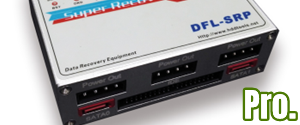
Easy to use at good price
Recover SATA, IDE, External HDDs, NVME SSDs, etc Order Now here
POTABLE DEVICE & NVME SSD RECOVERY TOOL
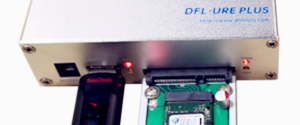
Recover USB Device and NVME SSDs at high speed! Read Details here.
DFL-PCIE DATA RECOVERY RECHARGE
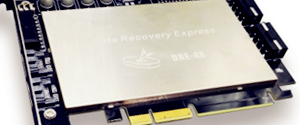
Best data recovery hardware tool to start a data recovery business, read details here
RECOVER SCRATCHED HDDS

Recover lost data from scratched hard drives, read details here.
SURFACE PRO. RECOVERY
BEST HEAD REPLACEMENT TOOLS
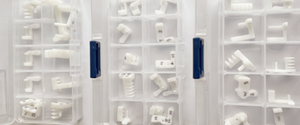
The most cost-effective head replacement tools for Seagate, WD, Samsung, Hitachi, Toshiba, Fujitsu

